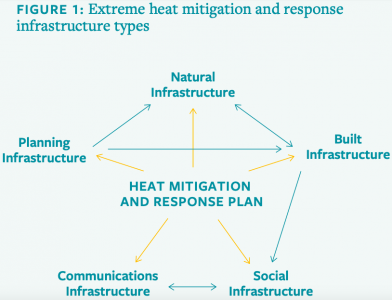Miami’s New Chief Heat Officer Is a Model for California Cities
Local leaders should embrace the approach
Last month, Miami appointed the country’s first Chief Heat Officer charged with addressing the impacts of extreme heat. Heat is already the leading climate-related cause of death and health impacts, responsible for thousands of US deaths and emergency room visits each year and countless hours of lost productivity and educational attainment. Recent research indicates that over one third of global heat-related deaths (which total tens of millions since the 1990s) are attributable to anthropogenic climate change.
These impacts hit harder in urban areas, with their heat-absorbing buildings and pavement – and hardest in lower-income communities and communities of color, which often have the least tree cover, parks, and access to air conditioning (sometimes by historical design).
The severity of extreme heat in places like South Florida and California’s Central Valley calls for comprehensive solutions and leadership, which is why Miami’s new position sets a highly valuable precedent. The first heat officer (who previously served as the city’s chief resilience officer) has signaled plans to increase tree cover, build more bus stations to serve as shade structures and facilitate mass transit, and retrofit older homes, with a focus on vulnerable communities. These solutions have the potential to save lives, strengthen the physical environment, and improve quality of life. They can also help reduce greenhouse gas emissions through reduced energy consumption and greater carbon sequestration.
As we wrote in last year’s report, Insuring Extreme Heat Risks, properly addressing extreme heat will rely on five interlocking types of mitigation and response infrastructure: natural (e.g., tree canopy), built (e.g., cool surfaces), social (e.g., cooling centers), communications (e.g., warning systems) and planning (e.g., zoning codes). Los Angeles, San Francisco, and some other leading governments have begun to plan this infrastructure, but implementation and funding remain in question.

Appointing city- or county-level heat officers could be a massive step in advancing this sort of comprehensive policymaking, which necessarily draws on a diverse set of government capacities (from public health and emergency services to transportation, housing, and public works). It would also facilitate new heat resilience planning and projects under legislation currently working its way through the state assembly. And it could be essential to build and lead the public-private coalitions needed to drive the innovative funding and financial risk transfer models we outlined in our report.
While California leaders are accustomed to setting the climate policy example for other cities and states, in this case our local governments should follow Miami’s lead and consider creating their own chief heat officers. The health, financial, and climate benefits will more than justify the public investment.





Reader Comments